Garden Report: February 7
OK. I give: it's spring. I'd been in denial, thinking it was just a run of warm weather and we'd be back to our usual winter cold and rain soon enough. But spring came early this year.
As evidence, I give you these buds on the quince tree:
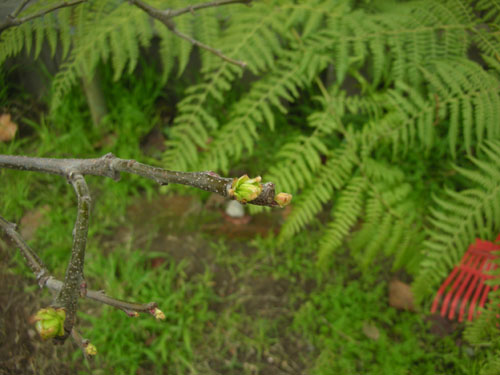
Last year they started opening up two weeks later.
What really brought it home to me was that I went on a bit of a shopping binge at Annie's, and as I was going around the garden planting, spring just kept getting in my face.
For example, I planted a Specularia speculum "Venus' Looking Glass" under the apricot tree.
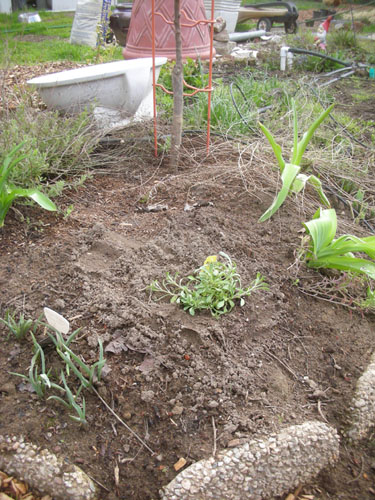
As I was doing that I noticed that the clusiana tulips right there were starting to come up. OK, all leafed out. How did I not notice that?
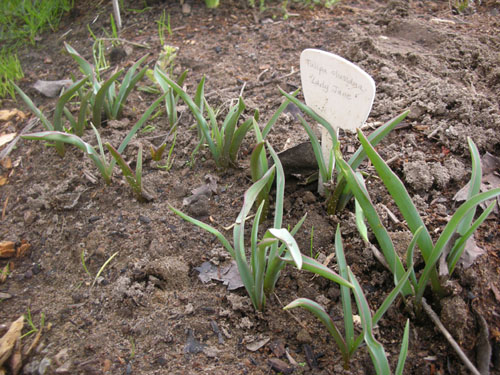
Which led me to look over where I have some more traditional tulips growing, and sure enough, they're coming up, too.
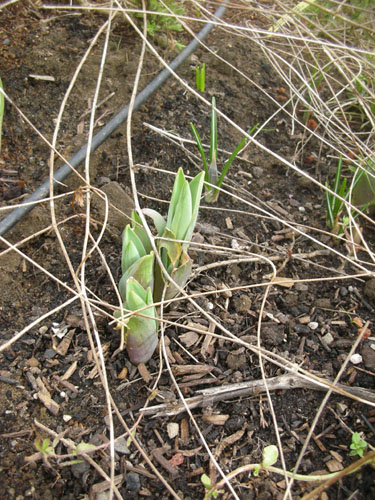
Come to think of it, it sure looks a lot like that viburnum is blooming, doesn't it?
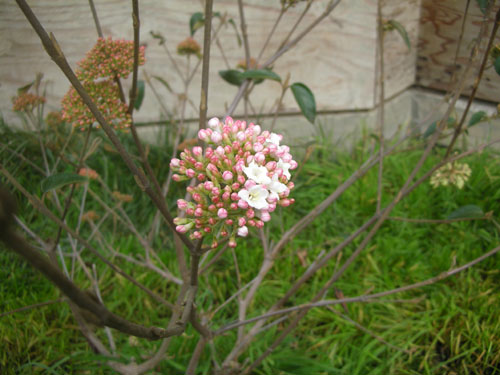
And I've been relying on the fact that the Japanese anemone were not yet emerging to reassure myself that it wasn't spring yet. Oh, darn.
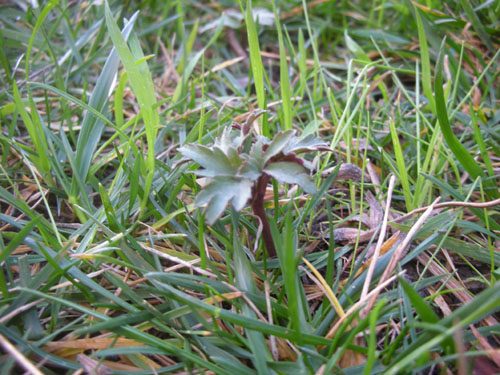
The reason for this dismay is that I still haven't planted out several bulbs, which have been chilling in the fridge. I can usually count on being able to keep them cool until mid-February without issue, and I suppose spring is not so early this year that it's a major issue, but I have to plant them this week. A fine time to run out of potting soil.
Also, there was the small matter of some winter pruning I never quite got round to doing. I spent a quick ten minutes limbing up the oldest four apple trees (which are all on standard rootstocks, so they will definitely grow more), chopping out some of the more obnoxious quince branches, and taking down a few crossed branches from the asian pears.
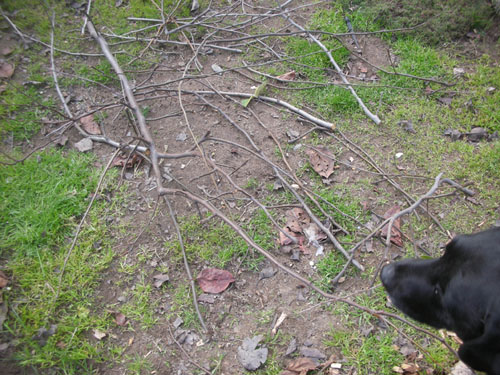
There are two large branches on the nectarines that I'm thinking might have to go, but I'll leave that for next year.
Speaking of the nectarines, it's time to spray them with copper to fight peach leaf curl. I should have done that last month, too.
Anyway, about the new plants. I mainly bought plants to fill areas that keep filling up with weeds. And to brighten up some bare areas from work I've done around the garden. For example, I put in a couple of Nemophila menziesii "Baby Blue Eyes" and Layia platyglossa "Tidy Tips" by the pond that will soon be a bog garden. I have limited experience with the Layla, but the Nemophila reseeds itself nicely and will fill in the area with very pretty blue flowers.
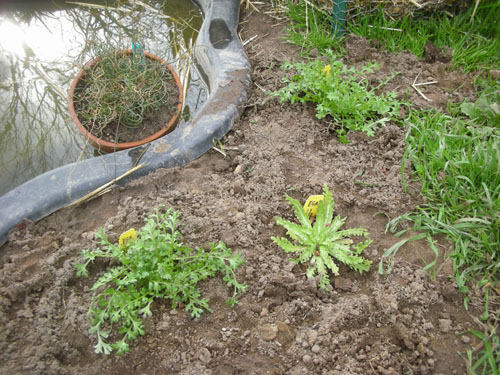
And there's this area along the fence where I'm fighting an ongoing battle with a combination of invasive ferns, Bermuda grass, mint, and pineapple sage. (When we bought the house, the yard was so overtaken by mint that when you mowed it smelled overwhelmingly of toothpaste.) I thought I'd get another hollyhock, because I was really liking the one I had. So I chose one I liked and brought it home, and lo and behold the one I had was also Alcea ficifolia 'Aunt Brownie Fig'. At least I know they will look good together, right?
I also put in a couple of Ladybird poppies and a Cynoglossum amabile 'Blue Showers' to stand up along the fence. And that little pile of weeds? That's the remnants of a pile five times the size from a weeding session to clear enough space for those few plants.
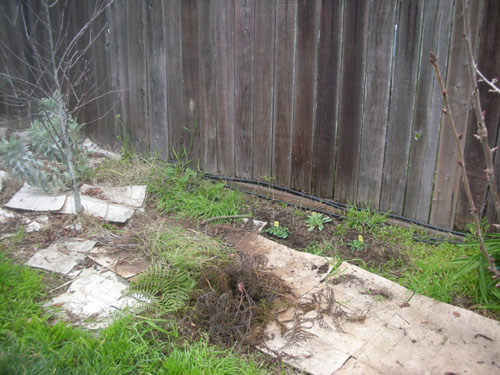
In the water catchment basin, I planted another Cotula leptinella. I put two in a couple years ago and they have spread very nicely along the edges of the basin. They definitely don't compete well with weeds, but they are very pretty, and they work in edges and tight corners. And they seem to survive my sporadic watering.
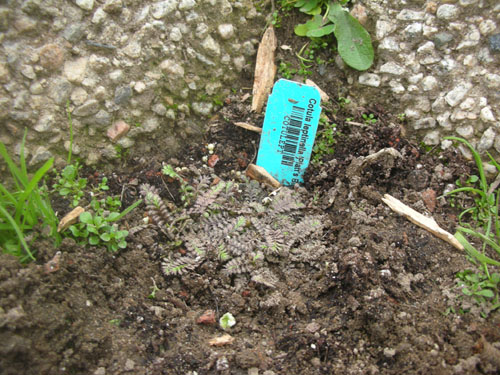
I've spent quite a bit of time this last week carefully clearing out dead plants and Bermuda grass from under the quince. It had sort of turned into a massive tangle of campanula there, some dead, some alive. At this time of year, mostly dead.
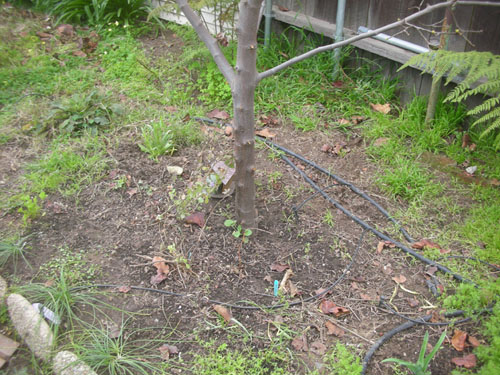
After all that work, I turned to the apple trees nearby to see what I could do about all the plant life around them, only to discover it was mostly poppies and nigella coming up. (I added a couple of new kinds of poppy there to add to the mix in the garden.)
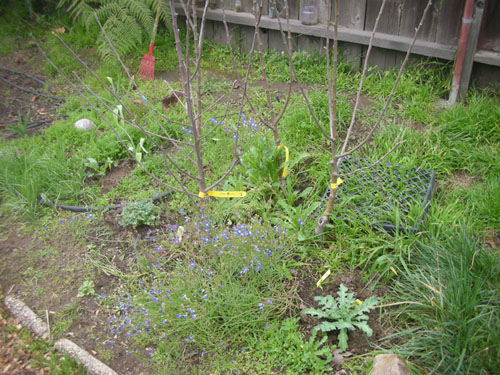
Yup. Definitely spring here.
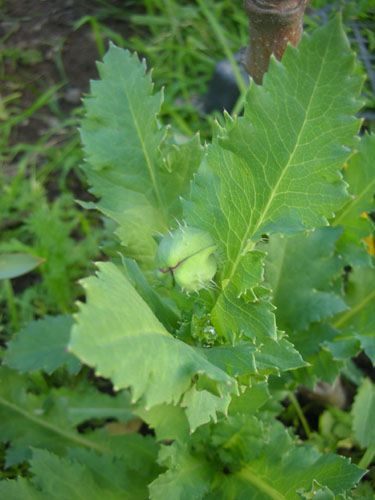
At the side fence, I started putting down cardboard to kill the sod under the fence. It's just been in the way, and it's hard to trim, so it was time for it to go. (This is fescue, not Bermuda grass, so cardboard will work just fine on it.)
I think a strip that is bare on either side of the fence will work nicely, although on the inside I have to be careful about planting because the dog likes to lie there and watch the sidewalk.
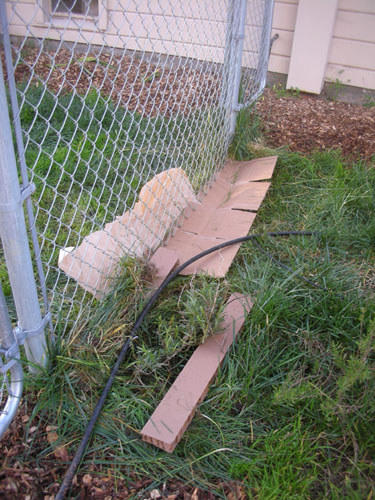
I have a couple other penstemons I want to plant along the fence on the outside. They've spent the winter in pots in the back yard waiting for me to get my butt in gear on this project, so as soon as I get a decent clear spot I can put them in. Also, we've been planning to slot a little grave in there for the ashes of Rosie's beloved boyfriend Ted, who died of lymphoma in the fall. We and his owners agreed that his most favourite place in the whole world was right at our side gate, so it seemed a good place to bury him.
In the meantime, I think it's time to put an end to this contorted hazelnut. It's never thrived since having a rough first year, and they are hardly rare or expensive.
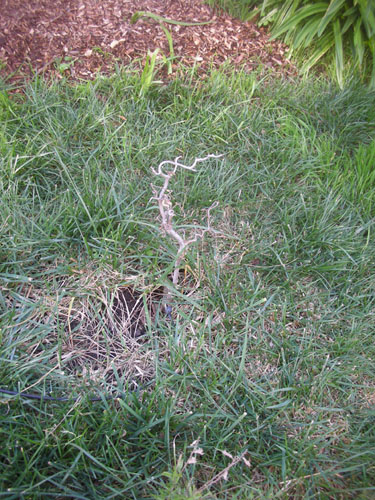
And finally, a couple of nice plants to have in this climate. The first is Leptosiphon 'French Hybrids', which I didn't buy this week (I got these in the fall; they are one of those plants I think I will always plant in the fall from now on, so they start out larger in the spring). They make a nice low plant that isn't invasive or obnoxious, doesn't need to be watered too much, and the flowers are very pretty. Just wait.
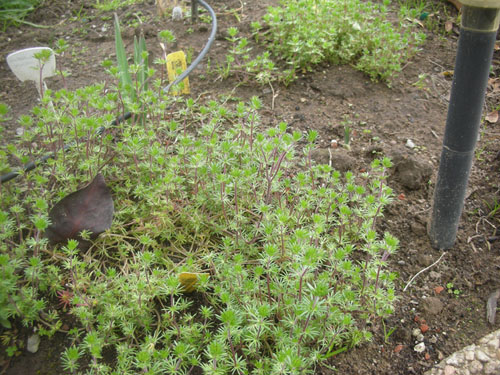
And the ever-present Leptospermum. This is Leptospermum scoparium "Red Ensign", purchased in the fall at Berkeley Hort. Grows to about six feet by six feet, which is a nice size for a tea tree. Noel liked the dark flowers and foliage. I like these shrubs because they are very drought tolerant, are evergreen (or everblack, in this case), and don't need too much pruning to stay pretty.
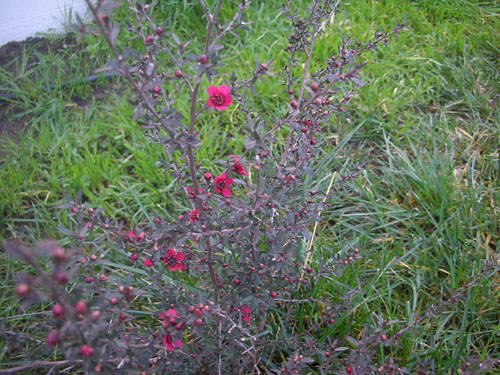
Not bad for early February, eh?
Technorati Tags: california, dogs, flowers, gardening, grass removal, plants, poppies, pruning, quince, springtime, weeds
posted by ayse on 02/07/09